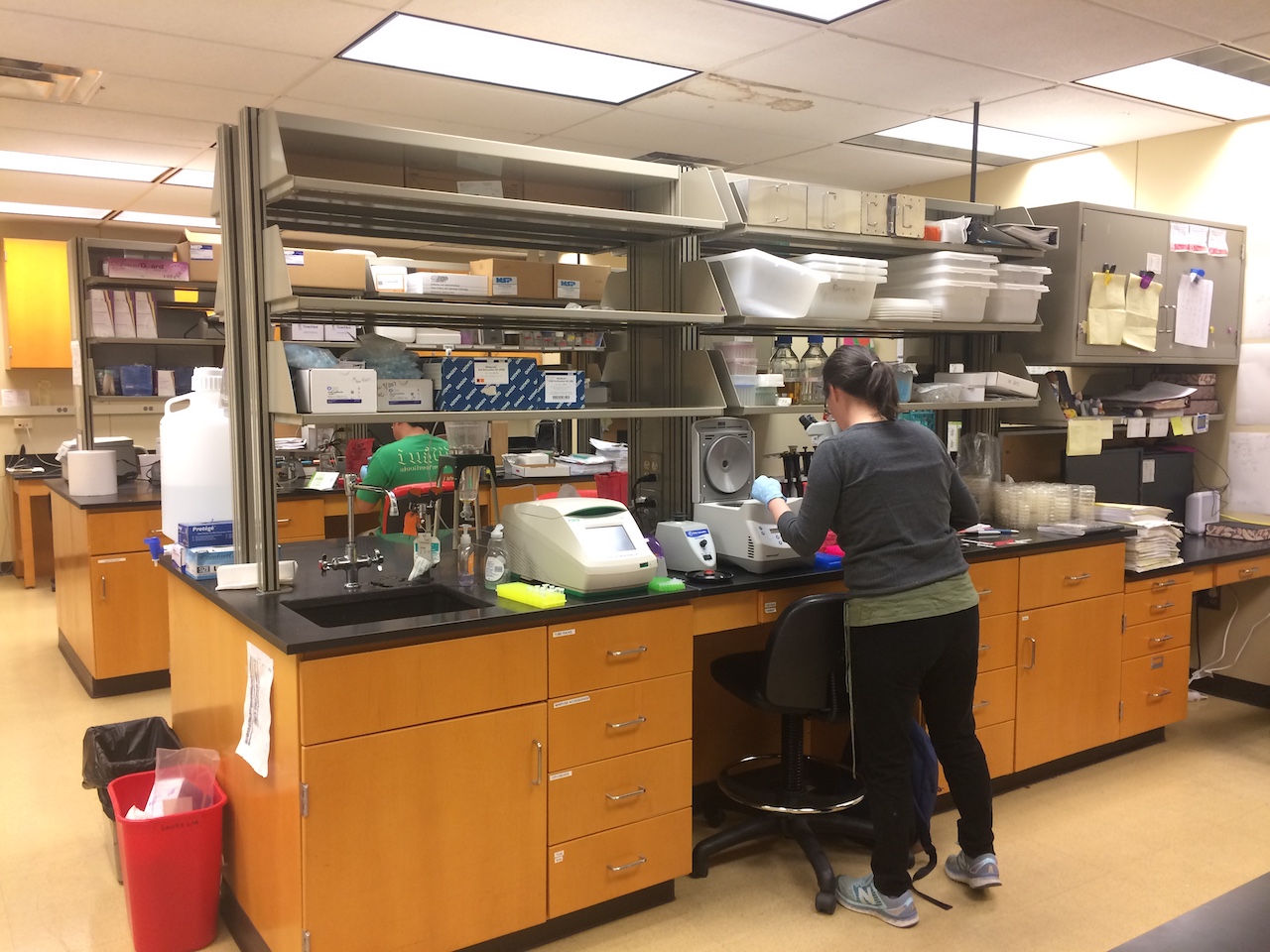In February’s blog post, we feature an interview with Dr. Adriana Dawes, Associate Professor of Mathematics and Molecular Genetics, The Ohio State University.
When did you first become interested in mathematics and biology?
I’ve always been interested in trying to understand how things work. When I started my undergrad, I took honours courses in astronomy, physics, math and computer science, with the intention to study cosmology - I was very much inspired by the work of Stephen Hawking in high school. As it turned out, I didn’t enjoy astronomy as much as I had hoped, but I really enjoyed my math courses, and finished my undergrad with a joint honours in math and physics. I became interested in adding biology to the mix when I started grad school at UBC. I was taking a course with Robert Miura who suggested math biology as a research direction. This led me to do a reading course in math biology under his supervision, and I was fascinated by the range of problems and approaches in the field. I hadn’t chosen to go to UBC because of the excellent math biology research being done there, I was just very lucky!
Was the decision to do a Ph.D. an obvious and easy choice?
Not at all! I had a rough transition from undergrad to grad, and I started my master’s at UBC more to prove that I could do math at an advanced level than a desire to pursue a career in academia. I enjoyed the research aspect so much that I decided to continue on to a PhD.
How did you come to run your own group?
I was the Max Wyman Assistant Professor of Mathematical Biology at the University of Alberta after completing a postdoc at the University of Washington’s Center for Cell Dynamics. While at the CCD, I had learned how to do bench science and managed to do some experiments with the nematode worm C. elegans. I loved being part of the math bio group at U of A and I had great colleagues in Biological Sciences who were incredibly generous with their time, space and reagents, but I really missed being able to direct specific experiments and control how data was generated. Then OSU advertised a tenure track position for someone who would have their primary appointment in the math department and a substantial secondary appointment in a life sciences department. This was exactly the kind of position I was looking for, and fortunately OSU took a chance on me. Since then, I have been careful in the balance of theoretical and experimental students that I recruit into my lab to make sure there is as much diversity as possible in how we approach our research problems.

What are your main research questions and why are they interesting?
Broadly, I am interested in how cells integrate biochemical, mechanical and geometric information in order to make proper cell fate decisions during development. We all start life as a single cell and mature into these incredibly complex organisms with around a trillion highly differentiated cells that carry out specific tasks. During development, cells must make their fate decisions in very noisy and dynamic environments, and yet most of the time you have cells doing the right thing at the right time in the right place. There is a lot we don’t understand about basic phenomena during development, and my research aims to uncover the rules that regulate these important processes, like how proteins organize to form patterns at the single cell level, and how signalling within and between cells positions division planes and directs gene expression to make functional tissues and organs. I also believe that by providing a more comprehensive understanding of these fundamental developmental processes, we are better equipped to understand how things go wrong with disease processes like cancer.

What makes you passionate about your work?
I love exploring new ideas and venturing into uncharted territory, using theoretical and experimental tools to shine a light on aspects of cell and developmental biology that we don’t understand. Even if I wasn’t in academia, I would probably be in a job that involves problem solving! I also find it tremendously satisfying that my work has the potential to provide a foundation to understand and fight against devastating diseases like cancer.
What is a typical work day/week like?
This is hard to answer because it changes all the time. On most days, I will have meetings with students and collaborators on my research projects. I love learning new things, so I attend at least a couple of seminars every week. I also spend a large proportion of my time writing and editing papers and grants. There are service activities sprinkled in there too, serving on committees, grant review panels, mentoring, and whatever needs doing. During the academic year, these activities get squeezed in around teaching.
Do you have any advice for someone considering a career in mathematical biology?
I think math biology is a great area to work in - there are so many fascinating open problems and opportunities to develop new quantitative tools and methods. I find the community of people in math biology to be incredibly supportive. Catching up with old friends and making new ones is always a highlight of the SMB annual meeting for me. Math biology can be applied to so many important problems, as theoretical epidemiologists have shown us during the pandemic. It’s an exciting and fast moving field with the potential to significantly impact the world around us.
What do you like to do in your spare time outside of work?
I love solving puzzles, both logic puzzles and crosswords. I also really enjoy working with my hands, especially baking and fiber arts (knitting and crochet). I find them very meditative, and at the end you have a delicious loaf of bread or a cozy sweater. And of course I love spending time with my family!